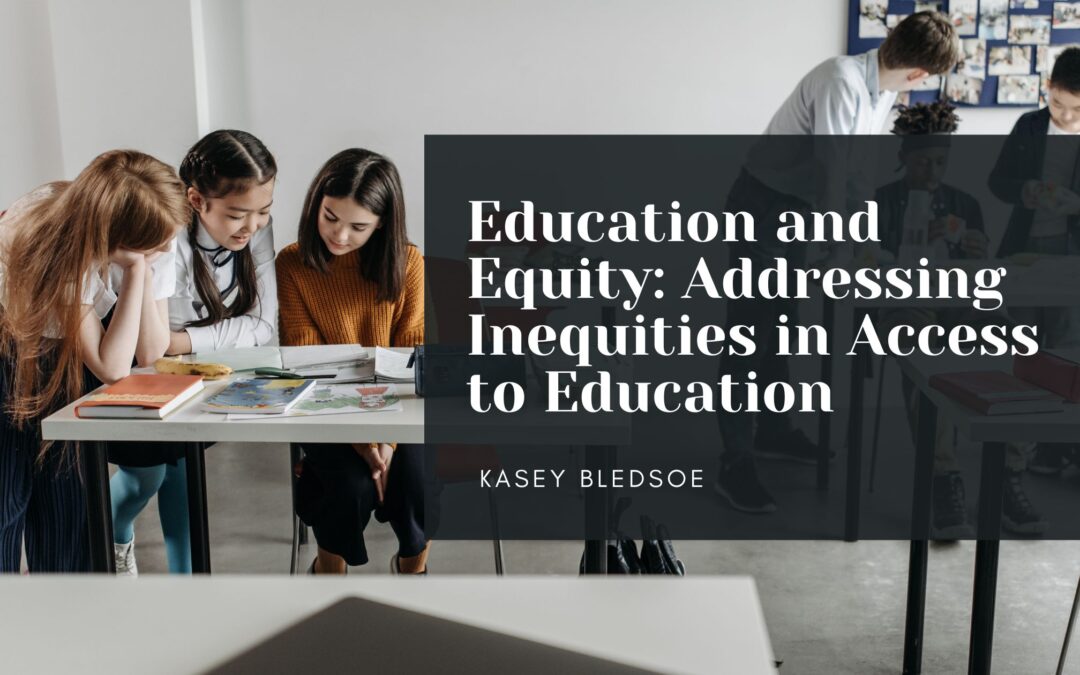Education is a fundamental right that should be accessible to everyone, regardless of socioeconomic background, race, gender, or other factors. However, inequities in access to education continue to be a significant challenge in many parts of the world. In this blog post, we will explore what education equity means, why it is essential, and how we can address inequities in access to education.
What is Education Equity?
Education equity means everyone has equal access to quality education and the opportunity to achieve their full potential. It means every student has access to the resources they need to succeed, regardless of their background. Education equity does not equal equality, which means treating everyone equally irrespective of individual needs. Education equity recognizes that different students have different needs and that providing equal resources to all students may be needed to address these needs.
Why is Education Equity Important?
Education equity is essential for several reasons. First, it is a fundamental right of all individuals to have access to quality education. Second, education is a critical factor in breaking the cycle of poverty and promoting economic growth. Third, education is essential for building a just and equitable society. Having access to quality education, regardless of background, leads to a more equal and fair society.
How to Address Inequities in Access to Education?
Addressing education inequities is essential for building a just and equitable society. There are effective ways to address disparities in access to education, including increasing funding for education, providing equal access to educational resources, addressing systemic inequities, improving access to early childhood education, and providing support for at-risk students.
Increase Funding for Education
One of the most effective ways to address inequities in access to education is to increase funding for education. This includes funding for schools, teachers, and educational resources. Adequate financing can provide necessary resources and support to students who may not have access to them otherwise.
Provide Equal Access to Educational Resources
Equal access to educational resources means that all students have access to the same quality of education, regardless of their socioeconomic background. This includes access to textbooks, technology, and other educational resources. Providing equal access to educational resources can help level the playing field and ensure that every student has the opportunity to succeed.
Address Systemic Inequities
Systemic inequities, such as racism and poverty, can significantly impact access to education. Addressing these systemic inequities can help ensure all students have access to quality education. This includes policies that promote diversity and inclusion in schools and address the root causes of poverty and inequality.
Increase Access to Early Childhood Education
Early childhood education is essential for promoting learning and development in young children. However, access to early childhood education is often limited for low-income families. Increasing access to early childhood education can help level the playing field and ensure that all children have access to quality education from an early age.
Provide Support for At-Risk Students
At-risk students, such as those from low-income families or those with special needs, may require additional support to succeed in school. Providing support such as tutoring, mentoring, and counseling can help ensure these students have the necessary resources to succeed.
Education equity means everyone has equal access to quality education and the opportunity to achieve their full potential. Addressing inequities in access to education is essential for building a just and equitable society. To address these inequities, we must increase funding for education, provide equal access to educational resources, address systemic inequities, improve access to early childhood education, and support at-risk students. By working together to address disparities in access to education, we can help ensure that every student has the opportunity to succeed.

